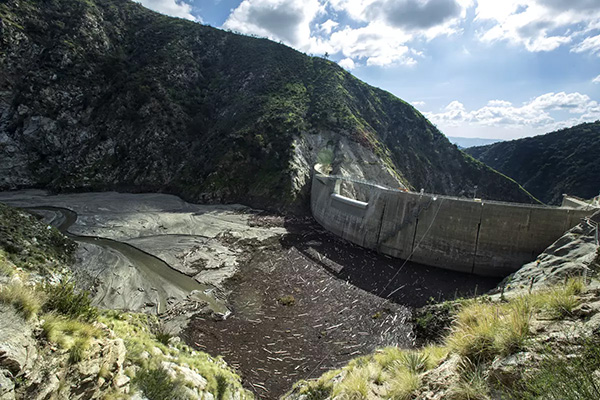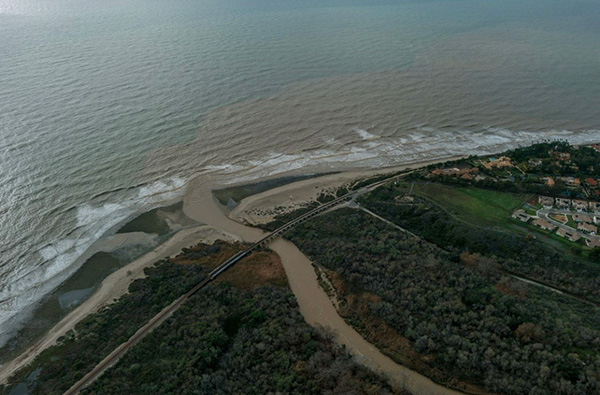OC Leaders Discuss How to Save California’s Beaches at UCI Forum

Assemblywomen Diane Dixon (center) and Laurie Davies (right) at the forum (Photo: Steve Zylius/UCI)
July 18, 2024 - If it takes a village to raise a child, it’ll take a collective of smart determined minds to solve one of California’s biggest environmental problems: beach erosion. UC Irvine professors and Assemblymember Diane Dixon sought to get that ball rolling by hosting a morning forum at UC Irvine last week titled The Business of Beaches.
It was the first gathering of key guardians of Orange County’s coastal environment and economy. Attendees included California Assemblymembers Diane Dixon and Laurie Davies, Orange County Supervisor Katrina Foley, several Orange County and coastal city officials, the LA Army Corps of Engineers, business leaders, environmental groups, UCI professors and other key people who want to restore California’s thinning beaches.
The Golden State is losing its beaches? Yes. A recent study by the U.S. Geological Survey shows that up to two thirds of Southern California’s beaches could disappear by 2100 if sea levels rise three feet, which according to the State of California Sea-Level Rise Guidance Document is likely.
The picturesque coastal city of San Clemente has seen beaches disappear already and its coastal railway shut down five times - for months at a time - since the fall of 2021. But Dixon wants people to see that this problem affects not only coastal cities but the entire state and its economy. “This is not just an OC coastal region issue,” said Dixon, “but one for the whole coast of California where there’s need for sand replenishment.”
On the morning of July 11, key figures made 11 presentations to highlight the impact of the coastal environment on the state and offer solutions. California has 427 beaches and visitor spending in 2023 was $150 billion according to Visit California. “It’s a very dynamic and important industry and employs a lot of people,” said California Chamber of Commerce Executive Vice President Martin Wilson. "In Orange County alone, over 132,000 jobs are related to tourism."
Edward Coulson, economics professor and director of the Center for Real Estate at UCI, estimates that one foot of beach erosion equates to about $3 billion loss of wealth in coastal properties.
But it’s not just coastal homeowners who enjoy the beach. Americans all over the nation flock to the coast. A poll conducted by OnePoll for National Beach Day found that the average American visits the beach six times a year and nearly a third go more often. Preserving California’s beaches is key to its economy and its identity.

The Santa Anita Dam (Photo: Mel Melcon/LA Times)
UCI Chancellor’s Professor of civil and environmental engineering Brett Sanders, a leading expert on beach erosion, explained that beach erosion is actually a manmade problem. California’s dams are trapping sediment that should naturally flow to the coast through rivers. “One million cubic yards of sediment is being blocked by the dams,” Sanders said. He suggests that dams and channels be redesigned and rivers restored so that the natural supply of sand can go where it’s needed and enjoyed most.
Sanders’ proposal to restore rivers would not only benefit the coast but also inland areas by making them more livable. He hopes to take on concepts like the LA Army Corps campaign of “engineering with nature.” Daria Mazey, Plan Formulation branch chief for the LA Army Corps, showed how rivers could be engineered to offer better quality of life for inland and coastal communities.
Currently any projects to protect the environmental must go through a costly complicated process of acquiring multiple permits. Nicola Ulibarri, UCI associate professor of urban planning and public policy, suggests streamlining the process to reduce the excess time and money spent on getting green infrastructure approved.

San Mateo Creek (Photo: Bring Back Our Beaches)
While many beaches in California are suffering from receding coastlines, the Orange County Water District (OCWD) has 600,000 cubic yards of sand a year at Prado Dam they will give away for free. They are making it easier to do so by expanding an app that started in San Francisco called SediMatch to match available sediment to beaches that need it, but that doesn’t solve the problem. “The travel distance and cost are really the barrier,” says OCWD Executive Director of Planning and Natural Resources Lisa Haney.
Another way to mitigate beach erosion was proposed by Miller Marine Science & Consulting principal scientist Eric Miller. He suggests constructing artificial reefs off the coastline in appropriate areas to dissipate energy from the waves that contribute to sand disappearing.
“The morning forum was the first time all the key people in Orange County who care about beach erosion were in the room at the same time,” said Sanders. And that was the point.
UC Irvine researchers and Dixon invited city and county officials, elected leaders, university experts, the Orange County Transportation Authority, the LA Army Corps, OCWD, Orange County Public Works, OC Parks and other public groups to attend.
“The forum had everyone talking to each other in the same room to see if solutions and ideas emerge,” said Sanders. “It gave us a lot of different perspectives on what the problem is.”
Can California save its beaches? Well, Orange County is a great place to start. “It’s not so impossible,” said Dixon. “We have some great minds working on this.”
- Natalie Tso
